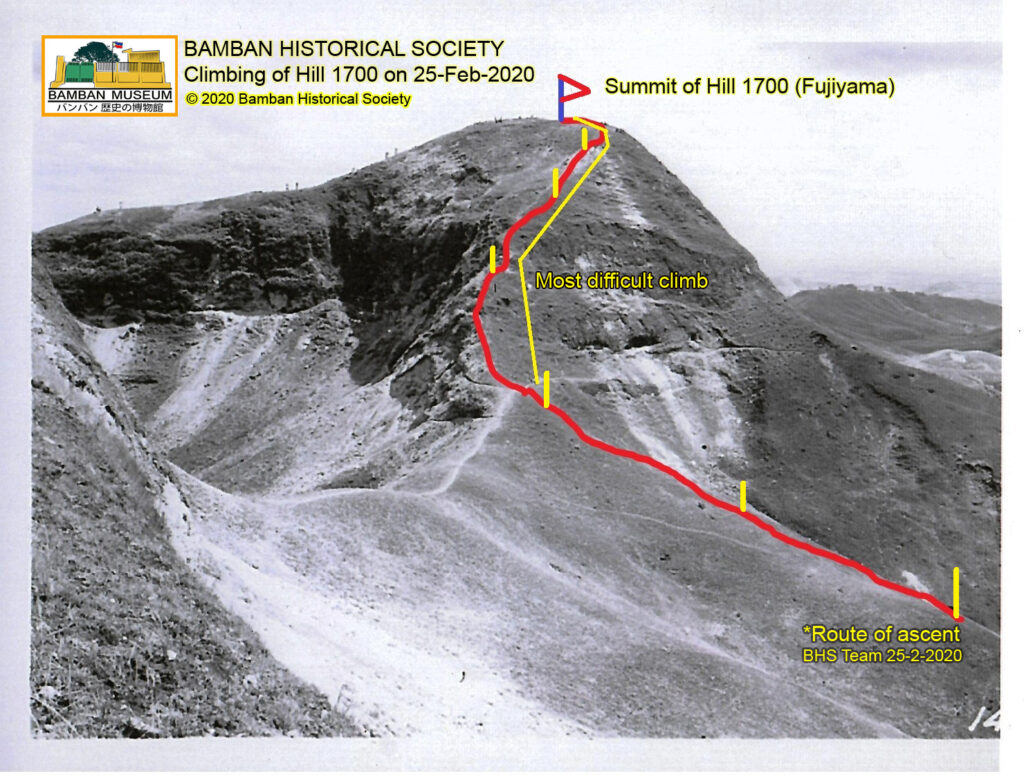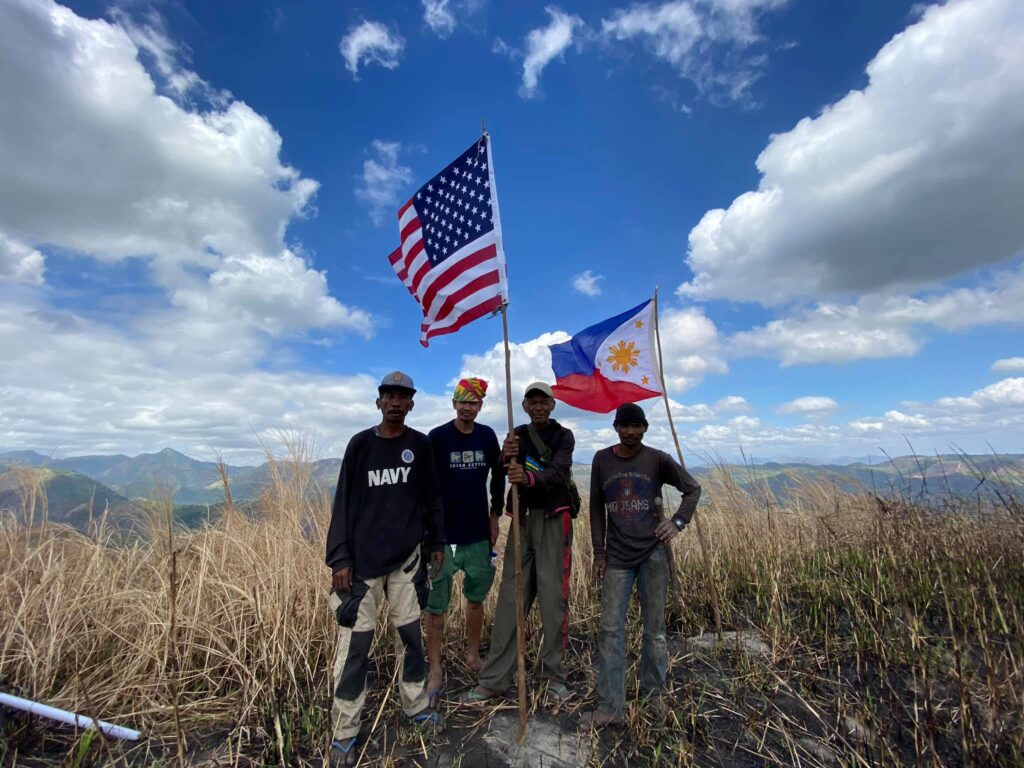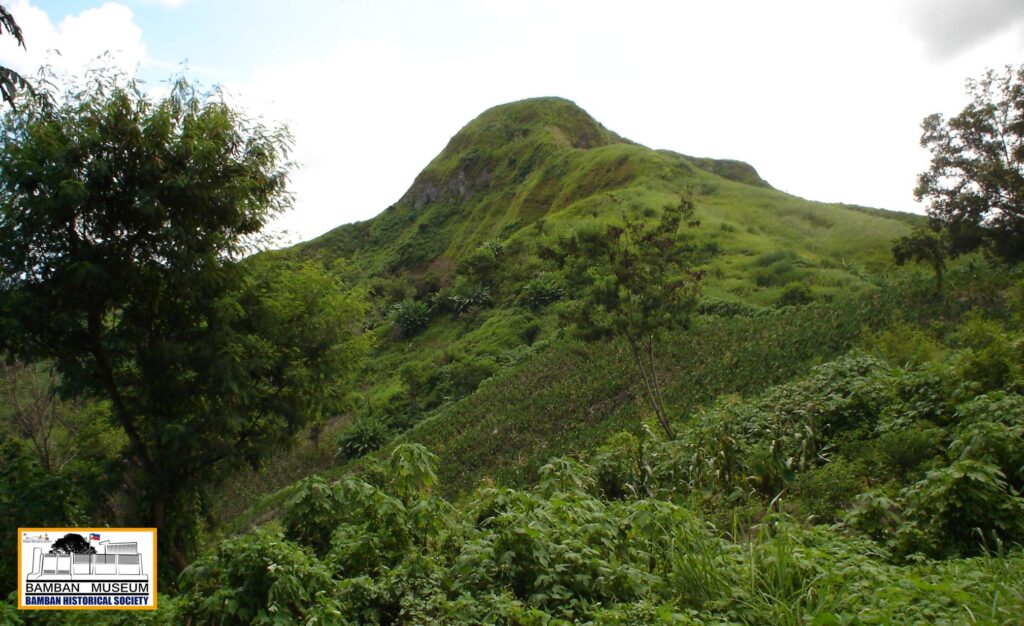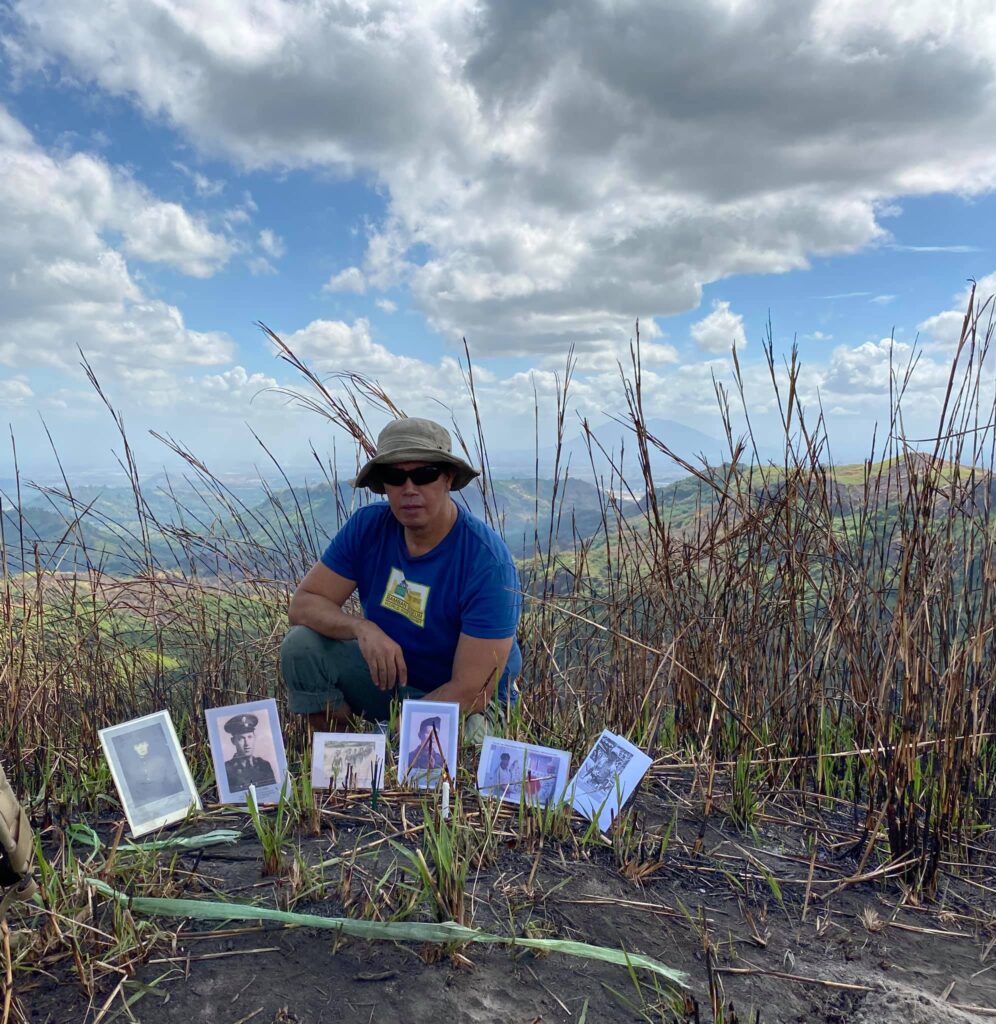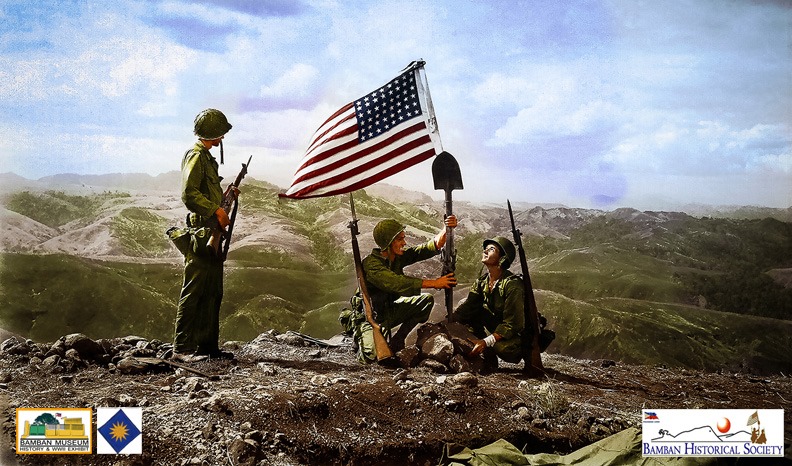
Unknown to many, there were also important events in the History of WWII in the Philippines that are worthy for remembrance. In our case in Bamban, Tarlac, our grandfathers and uncles fought in the many months of campaign in the mountains against the Japanese who were defending their positions in almost suicidal way. This was the war of our elders who are gone now, and for the Americans who gave their utmost sacrificed in the extreme condition and many gave their lives 79 years ago.
BHS INVESTIGATING HISTORY will take us to the major engagements between the US 40th Division aided by the local guerrillas (Bamban Battalion, Squadron 30, Biniayan Company – Bruce Guerrilla, South Tarlac Military District) and the Japanese Kembu Group, the Battle of Bamban Hills was a protracted war for the control of Clark Field. Secured on the north western anchor on rough, high terrain, Bamban Hills sit on strategic location that watch over the Clark Stotsenburg areas. Whoever controls Bamban Hills, commands the airfields and control the passage to the south including Clark and the road to Manila. After series of battles from among the dominating terrain of the Bamban since January 24, 1945; the American 40thDivision were already poised to conduct the fierce battle on the dominating hills west of Clark in the middle of February.
It was on February 25, 1945 that the American flag, being a colony of the United States at the time since the aftermath of the Philippine-American War of 1899-1902, was hoisted over the Bamban, on top of Hill 1700 the Aytas called Bunduk Gusi and the Japanese troops referred to as Fujiyama. The American forces under the 40thDivision tasted the fiercest battles in the Philippine Campaign at Bamban Hills against suicidal troops of the combined Japanese army and navy forces under General Tsukada.
The battle for the capture of Clark Field and Fort Stotsenburg lasted only a week, the last week of January 1945, after clearing Japanese pockets of resistance from the Eguchi Detachment holed on the edges of the many airfields. By January 30, General Kreuger raised the flag on the original pole of Fort Stotsenburg, while the headquarters of the main Japanese forces, the Kembu Group moved to Bamban Hills on Honmaru a day before. The battle for the control of Clark Field was moved to the rough terrain of Bamban Hills, where the main forces of the Japanese Kembu Group including the Naval Combat Sectors were anchored on these tunnel defense systems on the Bamban.
On February 15, 1945, US air force unites using B-24’s, P-51’s and P-38’s pounded the areas of Hill 1700, a very steep, dominating hill overlooking Clark Field where the Japanese 14thNaval Combat Sector was dug in for defense. 2nd and 3rd Battalions, 185th Infantry Regiment, 40th Division begun to scale the Hill 1700 fortress against withering enemy fire from rifles, machine guns and mortars. Up until the 23rd of February, the fight for the capture of Hill 1700 and adjacent hills fortified by the Japanese continued with very negligible result due to stubborn Japanese defenses.
On February 23, 1945 at 07:05 a.m., 3rd Battalion begun its attack on Hill 1700 supported by massive artillery bombardment. Tanks were able to position and to fire direct hits on Japanese tunnel defenses. 2ndBattalion crawled on the northeast slope of the hill and dug in for series of attacks against Japanese defenders until the next day.
The final attack on Hill 1700 commenced on February 25 with the units of the 185th Infantry participating and supported by massive concentration of fire from division artillery, tanks, tank destroyers, mortars and machine guns. The whole mountain was engulfed by the smoke brought by the tremendous bombardments. Elements of Company B, including Pfc. Elbert G. French, made their way to the southwest approach of Hill 1700 and planted the American flag on the peak at 10:20 a.m. while fighting was still ferociously fought between the Americans and Japanese forces. After 20 minutes of heavy fighting, Hill 1700 was finally captured by the 185th; however, several Japanese pockets of resistance continued but were later neutralized by effective ground units, artillery, and tank fires. Close to 343 Japanese died in the battle of Hill 1700 in its adjacent tunnel defenses.
The planting of the American flag on top of Gusi Hill (Hill 1700) signifies the many of the series of tough battles fought on the ridges of the Bamban Hills between the Americans, Filipinos and Japanese forces and the destruction of the main Kembu defenders protecting Clark Field facilities.
In February 25, 2004, Bamban Historical Society Field Recon Team led by Romel Dela Cruz made a sentimental hiking on the summit of Hill 1700 to commemorate the flag raising done by the soldiers of 185th Infantry, 40th Division in 1945. Last February 25, 2020, before the declaration of the Enhanced Community Quarantine brought by the COVID19 pandemic, our BHS WWII Battlefield Recon Team, partnered with Gene Eiring (who served with the US Air Force for many years) and our Ayta Scouts from Bamban, made the pilgrimage and scaled up Hill 1700, being the highest hill overlooking Clark Field for the 75th Anniversary of the Flag Raising.
It was very tough, with almost perpendicular cliffs on both sides of the very narrow trail leading to the summit. We are not mountain climbers, but with our utmost dedication for the preservation of WWII History, and especially the event (75th anniversary), we all scaled up Hill 1700 and planted the American and Filipino flags, and remember all who fought on these mountains, the troops of the 40th Division, the Filipino guerrillas along with the Ayta Squadron 30 (under Captain Bruce, Bamban), the Biniayan Company (Aytas under Bruce from Capas), and the Negrito Squadron 155 (Aytas under Major Conner from Porac Mountains, Pampanga). We prayed all who had died in the months of extreme combat on the rough terrain of Bamban Hills, with the Japanese Kembu Group whose death were more than 28,500 by the war’s end. May they all rest in eternal peace.
Rhonie Dela Cruz
Bamban Museum of History
Bamban Historical Society
Sources and References:
(1) 40th Division in WWII, The Fighting 40th in War and Peace.
(2) Official Records of the Kembu Group,
(3) Newspaper article related to 185th Infantry at Clark area (courtesy of Justin Webber).
(4) Bruce Guerrillas from the US National Archives courtesy of Dave Metherell.
Photos
(1) Photo of Hill 1700 exploding after a US Marine SBD bomber dropped aerial bombs near the summit, February 23, 1945. The route of our ascent to Hill 1700 are marked. US National Archives NARA photo.
(2) Raising of American Flag on top of Hill 1700 in Bamban, colorized by Randy Anderson. 40th Division US Army, US National Archives (NARA).\
(3) Another closer view of the summit of Hill 1700 after capture by the 185thInfantry, 40th Division US Army. The route we had taken are marked to highlight the terrain on our way to the summit. US National Archives NARA photo.
(4) Topographical map (DENR-NAMRIA) from Bamban area to Hill 1700, showing the road and mountain trails we traveled from Bamban Museum. \
Map by National Mapping & Resource Information Authority NAMRIA. Bamban Museum Collection.
(5) Photo of American soldiers from the 185th Infantry, 40thDivision firing on Japanese tunnel positions near the slope of Hill 1700, February 25, 1945. Hills are identified as part of the Bamban Hills range. US National Archives NARA Photo.
(6) Hill 1700, taken near the base before our ascent.
Rhonie Dela Cruz Photo.
(7) Photos of BHS Battlefield Recon Team on ascent to Hill 1700, February 25, 2020.



